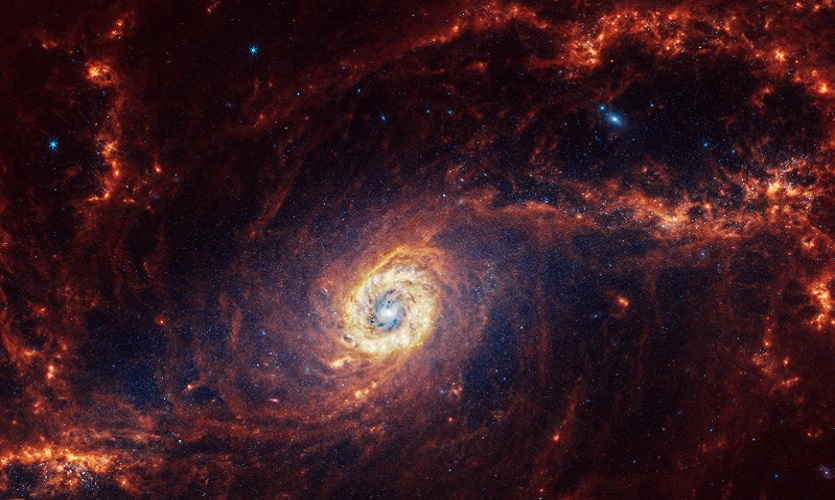'Breathtaking' images are new high in human exploration

Scientists at LJMU’s Astrophysics Research Institute say “breathtaking” images from the James Webb Space Telescope mark a new high in human exploration of the Universe.
New images were released publicly this week to the delight of scientists like Dr Jonathan Henshaw, a Royal Society University Research Fellow at ARI and an expert in star and galaxy formation.
Dr Henshaw, who is one of more than 100 astronomers involved in a panoply of projects to analyse data and images from JWST and the associated work of Atacama Large Millimeter/submillimeter Array (ALMA), said: “The images are truly breathtaking a fabulous advert for human exploration of Space and our field in general.”
The new images from Webb depict the staggering structures of 19 nearby spiral galaxies from their clearly-defined arms, brimming with stars, to their centres, where there may be old star clusters and – sometimes – active supermassive black holes.
Operated by NASA, the James Webb can deliver highly detailed scenes of nearby galaxies in a combination of near- and mid-infrared light.
Dr Henshaw said: “JWST is revolutionizing fields across astrophysics, and chief among them is the study of the earliest stages of star formation and the dusty interstellar medium (ISM). Mid-infrared observations have been key to building our understanding of this early star formation phase as it is concealed beneath a shroud of dust that blocks the passage of visible light. JWST's sensitivity and resolution are finally allowing us to see more sources.”
Combined with observations across the electromagnetic spectrum that capture all major stages of the star formation cycle, we can follow the progression of star formation – from molecular clouds to embedded and unembedded stellar populations – and provide new constraints on star formation efficiencies and timescales for theoretical models.
Webb’s images are part of a long-standing project, the Physics at High Angular resolution in Nearby GalaxieS (PHANGS) program, which is supported by more than 150 astronomers worldwide. Before Webb took these images, PHANGS was already brimming with data from NASA’s Hubble Space Telescope, the Very Large Telescope’s Multi-Unit Spectroscopic Explorer, and the Atacama Large Millimeter/submillimeter Array, including observations in ultraviolet, visible, and radio light.
Webb’s contributions have provided several new puzzle pieces.
“Webb’s new images are extraordinary,” said Janice Lee, a project scientist for strategic initiatives at the Space Telescope Science Institute in Baltimore, Maryland. “They’re mind blowing even for researchers who have studied galaxies for decades. Bubbles and filaments are resolved down to the smallest scales ever observed, and tell a story about the star formation cycle.”
IMAGE: Webb’s NIRCam (Near-Infrared Camera) captured millions of stars in these images, which sparkle in blue tones. Some stars are spread throughout the spiral arms, but others are clumped tightly together in star clusters.


